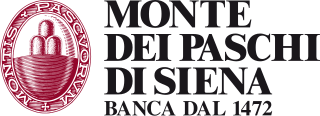
The International Finance Corporation (IFC) is an international financial institution that offers investment, advisory, and asset-management services to encourage private-sector development in less developed countries. The IFC is a member of the World Bank Group and is headquartered in Washington, D.C. in the United States.
Credit risk is the possibility of losing a lender holds due to a risk of default on a debt that may arise from a borrower failing to make required payments. In the first resort, the risk is that of the lender and includes lost principal and interest, disruption to cash flows, and increased collection costs. The loss may be complete or partial. In an efficient market, higher levels of credit risk will be associated with higher borrowing costs. Because of this, measures of borrowing costs such as yield spreads can be used to infer credit risk levels based on assessments by market participants.

China Development Bank is a development bank in the People's Republic of China, led by a governor-level cabinet minister, under the direct jurisdiction of the State Council. As one of three policy banks in China, it is responsible for raising funds for large-scale infrastructure projects, including the Three Gorges Dam and the Shanghai Pudong International Airport. Established by the Policy Banks Law of 1994, the bank is described as the engine that powers the national government's economic development policies.
A collateralized debt obligation (CDO) is a type of structured asset-backed security (ABS). Originally developed as instruments for the corporate debt markets, after 2002 CDOs became vehicles for refinancing mortgage-backed securities (MBS). Like other private label securities backed by assets, a CDO can be thought of as a promise to pay investors in a prescribed sequence, based on the cash flow the CDO collects from the pool of bonds or other assets it owns. Distinctively, CDO credit risk is typically assessed based on a probability of default (PD) derived from ratings on those bonds or assets.
An asset-backed security (ABS) is a security whose income payments, and hence value, are derived from and collateralized by a specified pool of underlying assets.
Tier 1 capital is the core measure of a bank's financial strength from a regulator's point of view. It is composed of core capital, which consists primarily of common stock and disclosed reserves, but may also include non-redeemable non-cumulative preferred stock. The Basel Committee also observed that banks have used innovative instruments over the years to generate Tier 1 capital; these are subject to stringent conditions and are limited to a maximum of 15% of total Tier 1 capital. This part of the Tier 1 capital will be phased out during the implementation of Basel III.

Banca Monte dei Paschi di Siena S.p.A., known as BMPS or just MPS, is an Italian bank. Tracing its history to a mount of piety founded in 1472 and established in its present form in 1624, it is the world's oldest or second oldest bank, depending on the definition, and the fifth largest Italian commercial and retail bank.
Financial risk is any of various types of risk associated with financing, including financial transactions that include company loans in risk of default. Often it is understood to include only downside risk, meaning the potential for financial loss and uncertainty about its extent.
A commercial mortgage is a mortgage loan secured by commercial property, such as an office building, shopping center, industrial warehouse, or apartment complex. The proceeds from a commercial mortgage are typically used to acquire, refinance, or redevelop commercial property.

UniCredit S.p.A. is an international banking group headquartered in Milan. It is Italy's only systemically important bank and the world's 34th largest by assets. It was formed through the merger of Credito Italiano and Unicredito in 1998 but has a corporate identity stretching back to its first foundation in 1870 as Banca di Genova. UniCredit is listed on the Milan and Frankfurt stock exchanges and is a constituent stock of the Euro Stoxx 50 index of leading shares.
The debt service coverage ratio (DSCR), also known as "debt coverage ratio" (DCR), is a financial metric used to assess an entity's ability to generate enough cash to cover its debt service obligations. These obligations include interest, principal, and lease payments. The DSCR is calculated by dividing the operating income available for debt service by the total amount of debt service due.

The W Holding Company was a financial holding corporation located in Mayagüez, Puerto Rico. On April 30, 2010, Westernbank, its wholly owned bank subsidiary, failed and its deposits and assets were seized by the Federal Deposit Insurance Corporation and subsequently sold to Banco Popular de Puerto Rico.
Concentration risk is a banking term describing the level of risk in a bank's portfolio arising from concentration to a single counterparty, sector or country.
The Bank of Mongolia, or Mongolbank, is the central bank of Mongolia. The main objective of the Bank of Mongolia is to ensure stability of the Mongolian tögrög. Within its main objective the Bank of Mongolia promotes balanced and sustained development of the national economy, through maintaining the stability of money, financial markets and the banking system.
A structured investment vehicle (SIV) is a non-bank financial institution established to earn a credit spread between the longer-term assets held in its portfolio and the shorter-term liabilities it issues. They are simple credit spread lenders, frequently "lending" by investing in securitizations, but also by investing in corporate bonds and funding by issuing commercial paper and medium term notes, which were usually rated AAA until the onset of the financial crisis. They did not expose themselves to either interest rate or currency risk and typically held asset to maturity. SIVs differ from asset-backed securities and collateralized debt obligations in that they are permanently capitalized and have an active management team.

The American subprime mortgage crisis was a multinational financial crisis that occurred between 2007 and 2010 that contributed to the 2007–2008 global financial crisis. The crisis led to a severe economic recession, with millions of people losing their jobs and many businesses going bankrupt. The U.S. government intervened with a series of measures to stabilize the financial system, including the Troubled Asset Relief Program (TARP) and the American Recovery and Reinvestment Act (ARRA).
Asset and liability management is the practice of managing financial risks that arise due to mismatches between the assets and liabilities as part of an investment strategy in financial accounting.
Before Uganda's independence in 1962, the main banks in Uganda were Barclays ; Grindlays, Standard Bank and the Bank of Baroda from India. The currency was issued by the East African Currency Board, a London-based body. In 1966, the Bank of Uganda (BoU), which controlled the issue of currency and managed foreign exchange reserves, became the central bank and national banking regulator. The government-owned Uganda Commercial Bank and the Uganda Development Bank were launched in the 1960s. The Uganda Development Bank is a state-owned development finance institution, which channeled loans from international sources into Ugandan enterprises and administered most of the development loans made to Uganda.

A bank is a financial institution that accepts deposits from the public and creates a demand deposit while simultaneously making loans. Lending activities can be directly performed by the bank or indirectly through capital markets.

On March 23, 2009, the United States Federal Deposit Insurance Corporation (FDIC), the Federal Reserve, and the United States Treasury Department announced the Public–Private Investment Program for Legacy Assets. The program is designed to provide liquidity for so-called "toxic assets" on the balance sheets of financial institutions. This program is one of the initiatives coming out of the implementation of the Troubled Asset Relief Program (TARP) as implemented by the U.S. Treasury under Secretary Timothy Geithner. The major stock market indexes in the United States rallied on the day of the announcement rising by over six percent with the shares of bank stocks leading the way. As of early June 2009, the program had not been implemented yet and was considered delayed. Yet, the Legacy Securities Program implemented by the Federal Reserve has begun by fall 2009 and the Legacy Loans Program is being tested by the FDIC. The proposed size of the program has been drastically reduced relative to its proposed size when it was rolled out.







